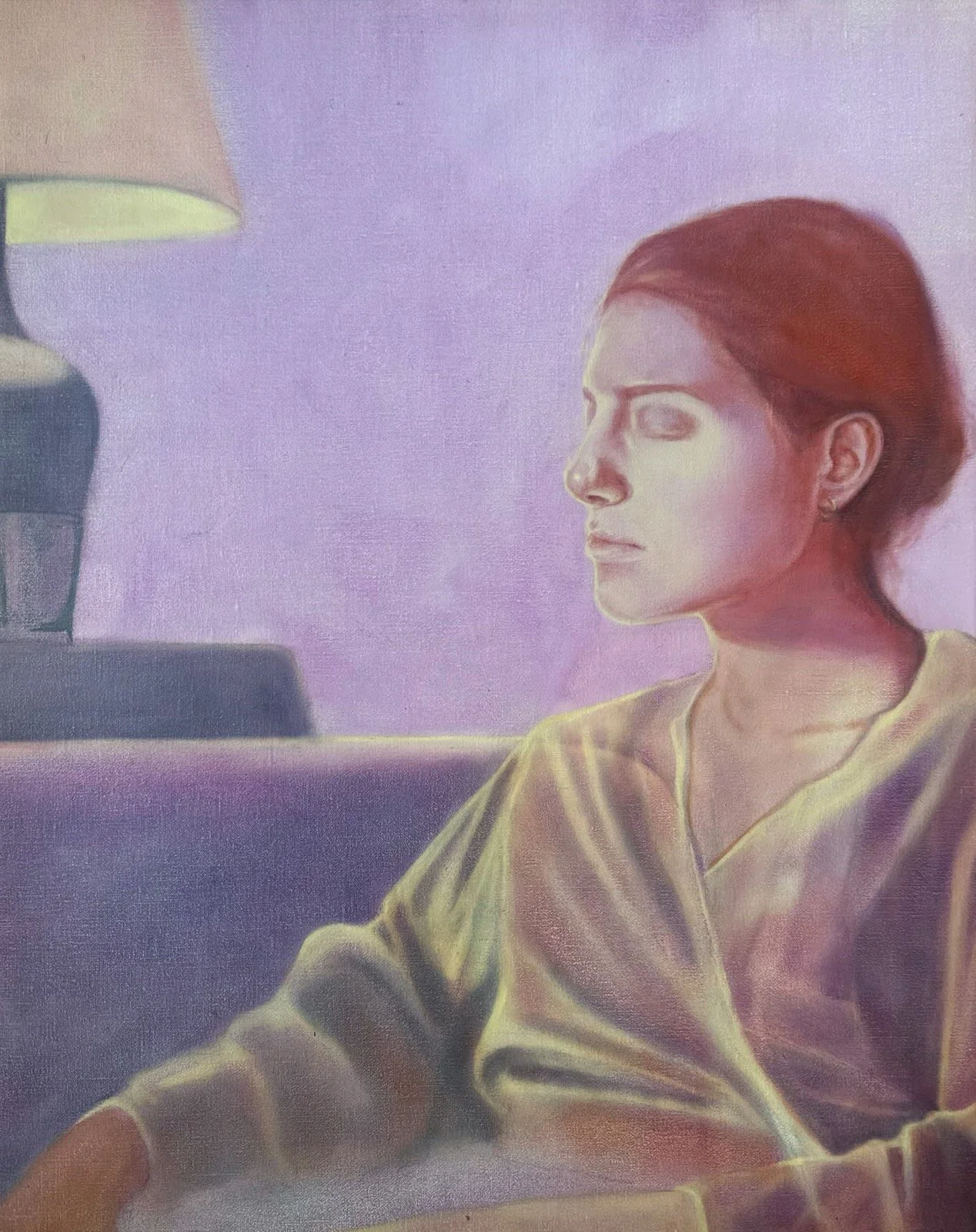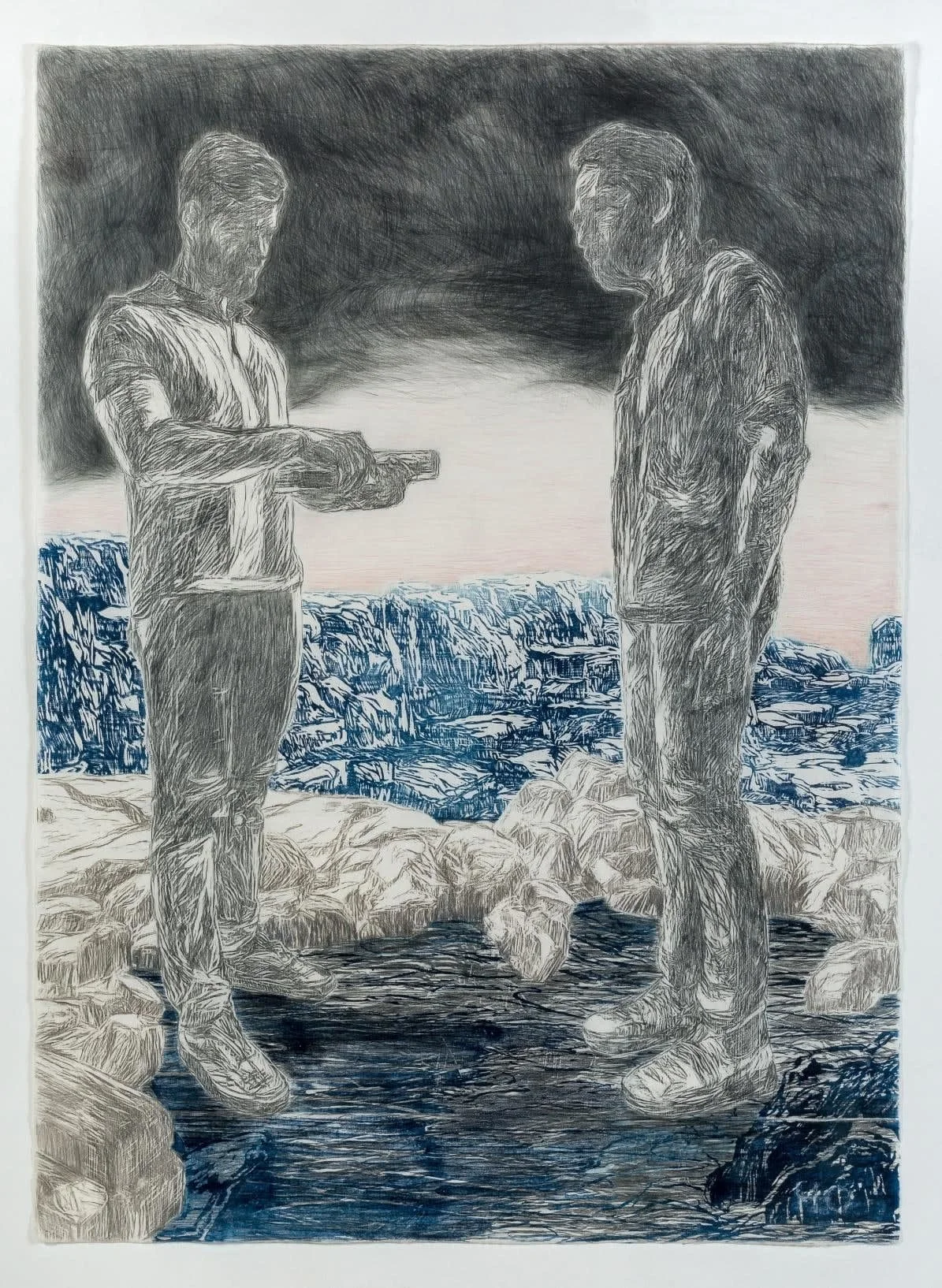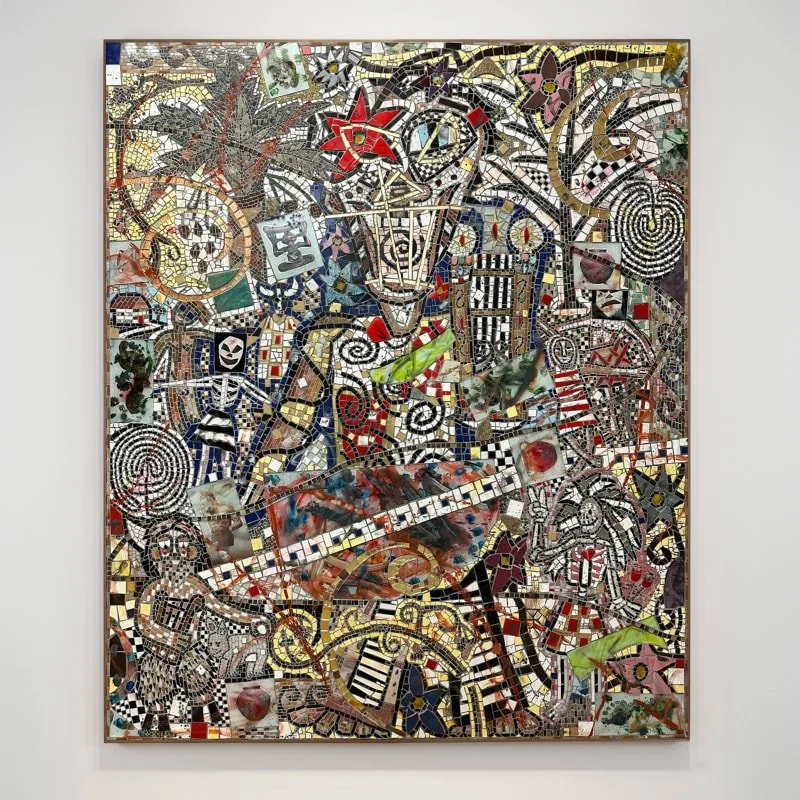Anoushka Mirchandani
“A House Called Tomorrow, “
New York, 245 Tenth Avenue
A House Called Tomorrow, which shares its title with a poem by Alberto Rios, is presented at a pivotal moment for Mirchandani. The exhibition coincides with the artist’s relocation to New York after more than a decade in California—a move that marks the beginning of a transient chapter in her life and parallels her experiences of immigrating from India as a young adult. Using autobiography as a window, Mirchandani negotiates how architectures of space, self-image, and relationships evolve across shifting socio-political landscapes. The artist manifests this in paintings that depict herself and her loved ones, and draw connections between a deep familial archive and her life in the present.
“You are not fifteen, or twelve, or seventeen— / You are a hundred wild centuries // And fifteen, bringing with you / In every breath and in every step // Everyone who has come before you, / All the yous that you have been, // The mothers of your mother, / The fathers of your father.”
A House Called Tomorrow, which shares its title with a poem by Alberto Rios, is presented at a pivotal moment for Mirchandani. The exhibition coincides with the artist’s relocation to New York after more than a decade in California—a move that marks the beginning of a transient chapter in her life and parallels her experiences of immigrating from India as a young adult. Using autobiography as a window, Mirchandani negotiates how architectures of space, self-image, and relationships evolve across shifting socio-political landscapes. The artist manifests this in paintings that depict herself and her loved ones, and draw connections between a deep familial archive and her life in the present.
In A House Called Tomorrow, scenes from the artist’s life in California and India appear alongside public parks in New York City; other works in the exhibition venture abroad to villages in Italy and the dense tropical forests of Brazil. Through these hyperlocal landscapes of personal importance, Mirchandani summons a psychic space that traverses land and time. This interior world is motivated by tumultuous feelings of nostalgia and loss that give way to hope, comfort, and agency. Previously, Mirchandani’s subjects appeared alone in solitary explorations of the self— but, as the artist’s horizons have grown through her recent move and subsequent travels, so have the roles of her subjects. Joining one another in community on the canvas for the first time in years, figures in Mirchandani’s new works expand social notions of love, intimacy, and care in the company of one another. Abstracted bodies blend and merge into natural land masses and architectural space, embodying a cyclical process of discovery and remembrance. In Mirchandani’s raw jungle works, she takes on positions of sensuality and strength in self-portraits that confront the viewer head-on, one-on-one in the wilderness. In doing so, she reclaims power from the trope of the “wild,” embracing herself through forays into the unknown.






